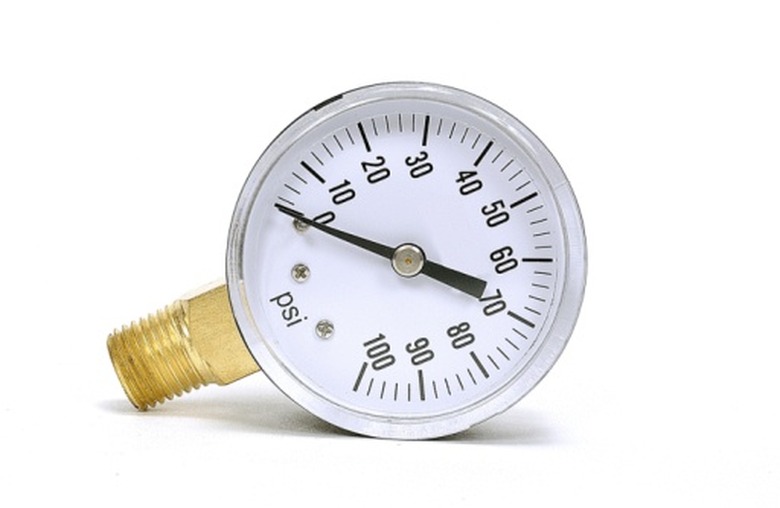How To Convert PSI To PSIG
In general, pressure is a force acting on a surface area; the psi unit measures pressure as pounds of force and square inches of area. Absolute pressure, which is what "psi" usually represents, takes into account the atmospheric pressure that acts on most objects. But pounds per square inch gauge (psig) is typically the pressure difference between a supply tank and the outside air; it ignores atmospheric pressure. To convert psi to psig, you add atmospheric pressure to the psig value. Atmospheric pressure is 101,325 pascals, or 101,325 newtons per square meter.
Step 1
Divide 101,325 by 1,550, which is the number of square inches in a square meter: 101,325 ÷ 1,550 = 65.37. This is atmospheric pressure in newtons per square inch.
Step 2
Divide the answer from the previous step by 4.448, which converts newtons to pounds: 65.37 ÷ 4.448 = 14.696. This is atmospheric pressure, measured in pounds per square inch.
Step 3
Subtract this answer from your pressure. For example, if you are converting a pressure of 50 psi, then 50 – 14.696 = 35.3. This is the pressure measured in psig.
Cite This Article
MLA
Menezes, Ryan. "How To Convert PSI To PSIG" sciencing.com, https://www.sciencing.com/how-8633344-convert-psi-psig/. 7 August 2017.
APA
Menezes, Ryan. (2017, August 7). How To Convert PSI To PSIG. sciencing.com. Retrieved from https://www.sciencing.com/how-8633344-convert-psi-psig/
Chicago
Menezes, Ryan. How To Convert PSI To PSIG last modified March 24, 2022. https://www.sciencing.com/how-8633344-convert-psi-psig/
